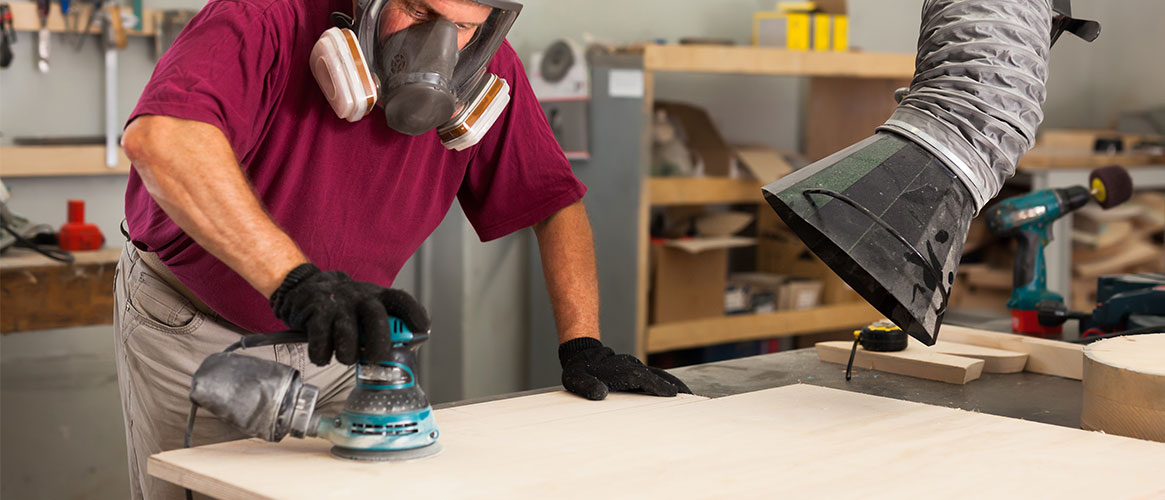Wood dust is not just dust. It can lead to serious health problems if you are exposed to it. Wood dust is tiny particles of wood produced during the processing and handling of wood, chipboard, and/or hardboard. Exposure to wood dust occurs in many industries, including logging and sawmill operations, furniture and paper manufacturing, and construction of residential and commercial buildings. Workers might be exposed when wood is sawed, chipped, routed, or sanded.
What your employees need to know about wood dust
Repeated exposures to wood dust can lead to allergic reactions, dermatitis, eye irritation, asthma, nasal dryness and obstruction, and frequent headaches. The natural chemicals in the wood that appear to be associated with allergic reactions are found in the inner parts of the tree or heartwood. Wood may also contain biological contaminants such as molds and fungi, which often grow on the bark of the tree.
In addition, wood may be treated with arsenic, chromium, or other chemical preservatives. Your workers are then at risk of breathing in the chemical preservatives as well as the dust.
Wood dust will also burn easily if ignited. Ignition sources include overheated motors or sparks. Concentrations of small dust particles in the air can form a mixture that will explode if ignited. This type of situation can also occur in dust collection equipment.
Wood dust on the floor makes the floor slippery, increasing the risk of a slip, trip, or fall injury. Vision can be impaired by airborne dust generated during wood processing. Wood dust is classified by the Occupational Safety and Health Administration (OSHA) as a hazardous chemical and is subject to the Hazard Communication Standard.
What your employees need to do to minimize wood dust exposure
It’s important to keep the dust from accumulating at the workplace. One way to keep the workplace clean is to use a local exhaust system. This device helps pull the dust out of the air as it’s generated, reducing your employees’ risk of breathing it in or it piling up on the floor and other surfaces.
Employees should also take the time to regularly clean the work area to prevent dust from accumulating.
Here are some steps to follow:
- Use a vacuum with a high-efficiency air (HEPA) filter to clean work surfaces and the floor. Do not use a broom or compressed air, as these can kick dust into the air.
- Use wet methods where appropriate by applying water at flow rates sufficient to reduce the release of visible dust.
- Make sure dust control equipment is properly maintained.
Employees can protect themselves further by using respiratory protection rated N95 or higher. Employers must provide this protection when requested by an employee. If conditions require the use of respirators, a full respiratory program should be implemented.
What to cover at your safety meeting on wood dust exposure
Discuss with your employees how exposure to wood dust affects their health both short term and long term. Make sure they understand their role in helping to mitigate the exposure. Training should also include:
- How to use a local exhaust system
- How to use the wet method
- How to use the vacuum cleaner with the HEPA filter
- How to maintain the equipment and properly discard the dust collected
- How to request and correctly use respiratory protection
Wood dust isn’t just dust, it’s dangerous dust. Make sure your employees have the equipment they need and know how to use it to help minimize their risks that come with dust particles flying through the air.

